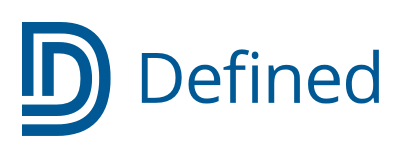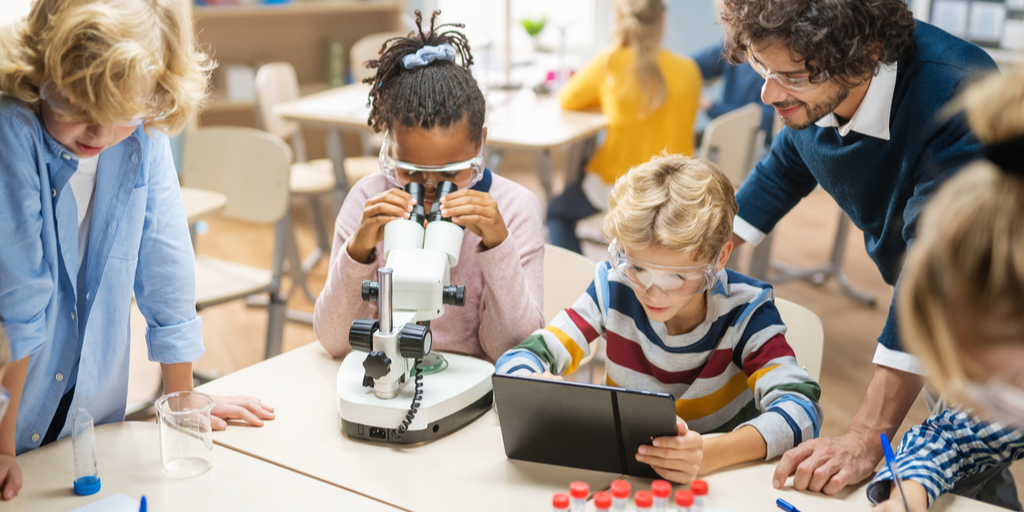Educators Blog
Professional Development That Changed My Teaching and Inspired My Students
By George Nelson and Bill Thornburgh,
Educators have many options to hone their craft in the quest of becoming better teachers. Professional development (PD) opportunities include: 1) improving teachers’ content knowledge; 2) updating teaching practices; 3) learning how to work with new standards (e.g. the Next Generation Science Standards (NGSS); 4) using strategies to more accurately assess students (e.g. Standards-Based Grading, formative assessments); 5) learning what organizations and companies have to offer (e.g. books, workbooks, activity kits); and 6) working with new technologies to keep classrooms up-to-date.
And times have changed… we have more options to control the amount of time and money we invest in our self-improvement because PD can take on many faces. Teachers can attend face-to-face or virtual options to accommodate busy career and family obligations. Teachers can sign up for learning experiences lasting anywhere from an hour to a day (and multi-day), and up to week (and multi-week) events. In my 11 years of teaching, I have attended various PD workshops, seminars, and conferences because I am committed to improvement.
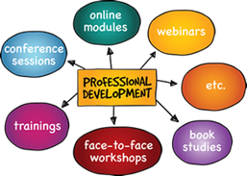
As many other teachers also have probably done - I attended some out of curiosity, some because I had a genuine interest, some due to word of mouth and positive experiences, and some because my administration said it was mandatory (I’m sure something we have all had to do!). In each of these experiences, I would like to say that they were beneficial and helped me become a more effective teacher. Unfortunately, though, that would not be the case!
In this article, I will highlight the key elements of professional development programs that have stood out above the rest and contributed to my improvement in teaching science.
These professional learning programs have:
- challenged and inspired me,
- made me see science from my students’ perspective,
- taught me new teaching strategies and how to question better,
- taught me to listen to my students and engage more meaningfully with them,
- improved my content knowledge
- showed me how important it is to provide a more authentic science experience for my students
- made me part of a community and connected me with other like-minded teachers,
- and pushed me to give back to the teacher community by becoming a workshop leader
An example of a PD program that I attended (and eventually became a leader of) that and transformed my teaching is the Modeling Instruction workshops through the American Modeling Teachers Association (AMTA). If you are a science teacher and you have not heard of Modeling Instruction and AMTA, I implore you to attend a summer workshop or take a distance learning course.
Key Elements of Effective Professional Development
With the various professional development (PD) options available - how can teachers choose the most effective and identify high-quality offerings? Over the years, various publications and studies have identified design elements of quality PD (see Table 1). I would like to focus on two such publications and share my experiences in Modeling Workshops using the elements identified in each.
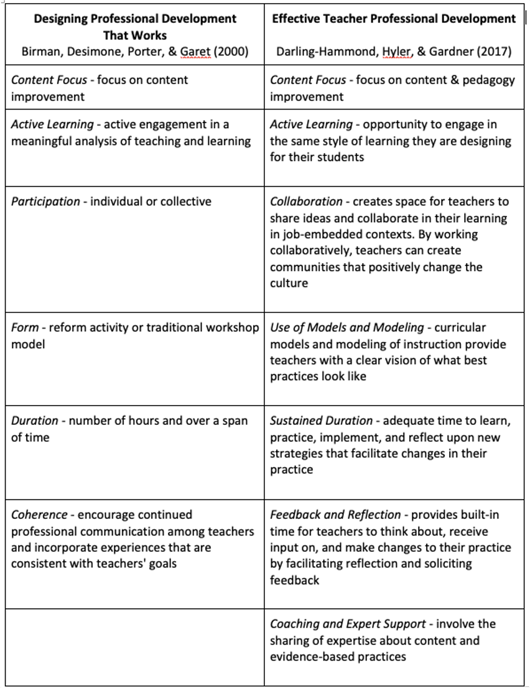 Table 1. Important Design Features of Effective Professional Development
Table 1. Important Design Features of Effective Professional Development
Content Focus: During a middle school Modeling Instruction workshop - the ‘content’ is both the Modeling pedagogy and middle school science concepts. Workshop leaders guide teacher participants through life, earth, and physical science while they are participating in ‘student mode’. The teachers complete activities display their thinking and knowledge through multiple representations on whiteboards (e.g. mathematically, graphically, pictorially, diagrammatically), and participate in whiteboarding sessions just as they will have their students do during the school year. Throughout a workshop, leaders model the pedagogy for teachers and take them through the Modeling Cycle (Figure 3), questioning, data collection and analysis, argumentation from collected evidence, and use of various whiteboarding strategies.
 Figure 3
Figure 3
Workshop participants obtain a customizable set of instructional resources and new instructional practices, as well as many opportunities to improve content knowledge (science and pedagogical) through collaboration, feedback, and coaching.
Active Learning: A Modeling Instruction workshop is not ‘sit-and-get’. Participants are constantly engaged in discussions and hands-on activities where they can share their thinking, experiences, and opinions, which is crucial for meaningful PD. The entire flow of a workshop is a model for how teachers could design their own class and how they could teach and engage with students. The time spent in ‘student mode’ gives teachers a different perspective on how students think and learn, as well as the preconceptions and misconceptions students may have. The importance of active learning while in the role of learner is important so teachers can adjust their teaching practices for clarity, effectiveness, and student-centeredness - all leading to a better science experience for students!
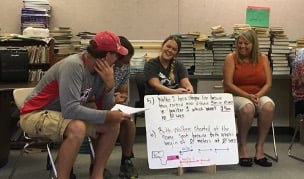
Participation/Collaboration: Participating in professional development with a group that teaches the same content elicits rich conversations and varying perspectives. This allows teachers to discuss concepts and problems specific to their content and students in the middle school setting. The workshops typically include participants with varying amounts of science teaching experience as well as teachers from different communities (e.g. urban vs. rural). The diversity leads to innovative ideas and solutions to issues we face in science education. As the workshop attendees work in an immersive, supportive, and collaborative environment, they become part of a team - the team to improve science education. Furthermore, and a very important outcome of Modeling Workshops, workshop participants begin to build a strong community of practice (CoP). According to Etienne Wegner, the cognitive anthropologist who coined this term, a CoP is defined as“a group of people who share a concern or a passion for something they do and learn how to do it better as they interact regularly”.
There is no doubt that teachers share a common concern/interest in science education and their students, they are willing to share best practices with others, and they communicate through face-to-face and virtual means on an ongoing basis… but not all have a CoP. A Modeling Workshop helped participants establish one.
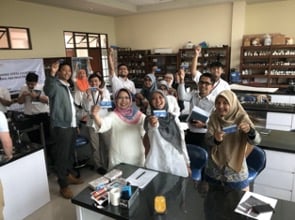
Form/Use of Models & Modeling - Modeling Workshops immediately hook teachers through authentic science learning experiences. During the multi-week workshops, teachers improve their science content knowledge and learn a new pedagogy (Modeling Instruction) from expert Modelers (teachers who use Modeling Instruction). Participants will learn about models, learn how to work through the Modeling Cycle, and define what Modeling Instruction is and how it looks in a classroom. A central feature of workshops is that leaders constantly model the pedagogy and provide teachers with a clear vision of what best practices look like. This is an essential design element of effective professional development identified by Darling-Hammond et al. (2017).
Duration/Sustained Duration: One day or even one week is not adequate time to internalize and implement Modeling Instruction in your classroom. I believe 2-weeks (60 hours of contact time) is the minimum time to be able to execute Modeling Instruction with fidelity. This is because week one accomplishes the following: 1) participants experience how students construct and revise models through a cohesive curriculum storyline, where one activity builds to the next; and 2) participants observe how the instructional practices are orchestrated through student-to-student discourse and Socratic seminar by the instructor. Then, the second week demonstrates how other units develop models, while at the same time allowing participants to hone their craft in Socratic questioning (see Figure 6).
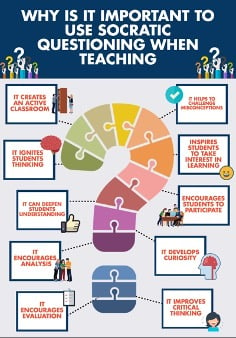
Figure 6
At the conclusion of a workshop, participants have access to a strong community of Modelers, which adds to the potential duration of learning and improvement. There are options for virtual PD (e.g. webinars, distance learning, modules) during the school year as well as additional face-to-face summer workshops.
Coherence: Workshops participants engage with peers and workshop leaders in the same way their students will in their classrooms during the year. The participants experience hands-on labs followed up with post-lab discussions. Each activity builds upon the last, resulting in a coherent storyline. Essentially everything done in a workshop (as well as in OUR OWN classrooms) should have a flow. The storyline is a sequence of activities that build students' conceptual models, which they constantly challenge and revise based on evidence. Because Modeling Instruction pre-dates the NGSS, an unintended, but a positive outcome for participants to share with colleagues and administration is that Modeling aligns with the NGSS framework.
Feedback and Reflection: AMTA workshops provide ample time for teachers to think about activities - how they come together to build a coherent storyline; instructional practices - how those practices play out in the classroom and put students at the forefront of learning; and content - how teachers strengthen their own knowledge and ways to help students correct misconceptions as well as build a strong foundation of content knowledge. Throughout workshops, teachers observe leaders modeling the pedagogy and explaining the ‘why’ to their pedagogical decisions. This allows teacher participants to experience the pedagogy in ‘student mode’ followed by time to ask questions and hold discussions in ‘teacher mode’. Additionally, teachers have time during the day and homework (e.g. worksheets, readings, journaling) to practice, reflect, and receive feedback on workshop activities.
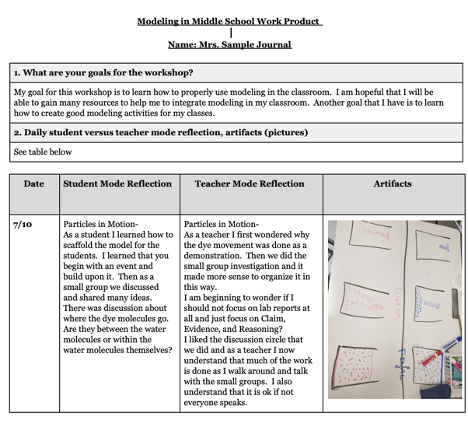
Coaching and Expert Support: This is integral to the experience! Workshop leaders are experienced teachers and expert Modelers who provide support for participants. Leaders have attended multiple workshops, they have successfully implemented the Modeling pedagogy into their own classrooms for many years, and they have been formally trained in workshop leadership. Leaders provide guidance and help teachers, not only during but long after workshops have concluded. The Modeling community they become a part of is active on social media, they present at regional and national conferences, and their names show up on Teacher of the Year lists (e.g. state winners, American Chemical Society, National Aerospace), Presidential Awardees, and Einstein Fellows. This new community of practice is always open to providing expert support for other Modelers!
The outcomes of these workshops are: 1) invigorated teachers who are prepared to engage with students in more meaningful ways; 2) participants leaving with the resources and strategies necessary to improve science education for their students; 3) increased knowledge of promoting equality and teaching for deeper understanding of science concepts (and conceptual models), and 4) increased preparation to tackle teaching using the three dimensions of the NGSS.
Thanks to what I learned in these professional development workshops, my classroom is truly student-led and students are engaged in relevant learning experiences. I’m able to provide my students with opportunities to evolve their prior knowledge and develop greater conceptual understanding. Most importantly, my students work collaboratively through small group and whole-class discussions, they collect data, they are able to construct explanations based on evidence, their communication has improved, and their critical thinking and problem-solving skills are better! Furthermore, my students have developed essential skills that will be useful in life (i.e. 21st Century Learning Skills, Fig. 10), which the professional development said would happen!
Why Creating a Larger Teacher Community is Essential
I continue to practice Modeling Instruction with my students and I hone my craft by studying the underpinnings of the Modeling pedagogy. Over the years, I also started to present at conferences, deliver local specialized PD sessions, and I became a workshop leader for Middle School Science workshops. I have chosen to be actively involved in AMTA and workshops because I believe in it so deeply.
In addition to changing how I teach, AMTA and Modeling Instruction introduced me to a community of science teachers around the country that share similar enthusiasm, values, and aspirations for science education as I do. It is vital that we build this larger community for a sharing of resources, ideas, and different perspectives to better meet the diverse student population we work with. I would not be the teacher I am today if not for being a part of such a robust network of science educators. As it is often said within our CoP - being a Modeler is an identity. This is an identity that has shaped my teaching, influenced my students, and one that I embrace wholeheartedly.
Author:
George Nelson began his teaching career in 2009 and is currently teaching 7th-grade science in Wilmette, IL. George became acquainted with Modeling Instruction from the 3rd Masters of Natural Science program at Arizona State University under the leadership of Colleen Megowan-Romanowicz. George has served as a Middle School Workshop Facilitator for the last 6 summers; he has made connections with hundreds of middle school teachers across the Midwest during this time. George understands the struggles teachers are experiencing with adopting modeling instruction. His initiative is to help develop resource materials that will support Middle School and Elementary teachers in implementing modeling instruction at the lower grade levels.
References:
Birman, B. F., Desimone, L., Porter, A. C., & Garet, M. S. (2000). Designing Professional Development That Works. Educational Leadership, May, 28–33.
Bybee, R., Taylor, J. et al. (2006). The BSCS 5E instructional model: Origins and
effectiveness. Colorado Springs, CO: BSCS.
Darling-Hammond, L., Hyler, M. E., Gardner, M. (2017). Effective Teacher Professional Development. Palo Alto, CA: Learning Policy Institute.
National Research Council (NRC). 2011. A framework for K-12 science education: practices, crosscutting concepts, and core ideas. Washington, DC: National Academies Press.
Windschitl, M., Thompson, J., & Braaten, M. (2018). Ambitious science teaching. Boston, MA: Harvard Education Press.
Subscribe to the #1 PBL Blog!
Receive new articles in the world of Project Based Learning, STEM/STEAM, and College & Career Readiness.
